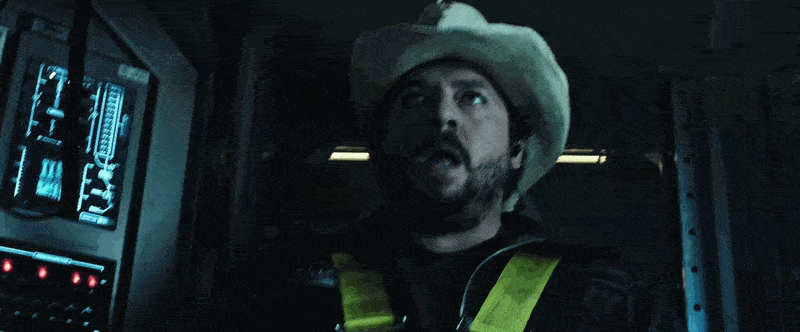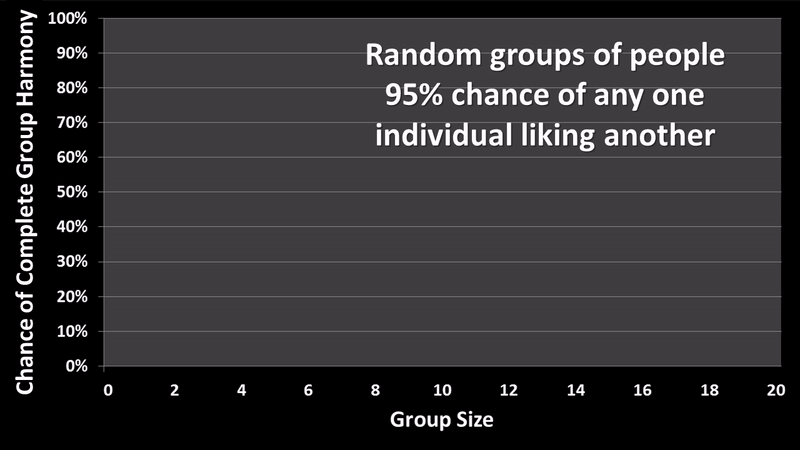From breaking glass to chest bursting, the scientists' review of Alien: Covenant
- Written by Michael Milford, Associate professor, Queensland University of Technology
Alien: Covenant is the sequel to the 2012 film Prometheus, and follows the crew of the ship Covenant as they set out to colonise an uncharted paradise.
Of course things are not as they seem and they’re soon fighting for their lives in the most terrifying of situations.
The film introduces an almost all new cast with a few well-known faces, such as the wonderfully creepy Michael Fassbender. While touching on a new topic with a different tone, the film has the familiar Alien flair and DNA attached to it.
It’s horrifying, visceral and a worthy new entry in the canon that began way back in 1979 with director Ridley Scott’s nightmare vision featuring the heroine Ripley, played by Sigourney Weaver. Covenant also features a strong female lead, Daniels, portrayed by Katherine Waterston.
Alien: Covenant.As proper science fiction films, the Alien movies have always been filled with scientific and mathematical concepts. Here we’ll dive into some of the ones encountered in Alien: Covenant, which echo themes present in the earlier films as well.
As per usual, a high-level “just for fun” analysis must make major assumptions and simplifications to do the maths, so you’ve been warned!
Is that glass going to hold?
Film characters often seem to find themselves in situations where there’s only a flimsy pane of glass between them and some horrifying monstrosity (remember Jurassic Park?).
Covenant does not disappoint. In fact, glass seems to play a major part in almost every scene (from the sleeper pods to the lander).
In one memorable scene, when the crew is being evacuated from the planet, an alien tries to crack through the glass of the spacecraft as it takes off.

(Twentieth Century Fox)
We can do some back-of-the-envelope calculations on how tough that glass would have to be to stop the alien coming through it. We’re going to work off glass pressure ratings – the amount of pressure they’re rated to withstand.
Let’s say the alien’s head (the main battering ram in this clip) weighs 100kg. We can guesstimate how fast it’s moving. The clip plays at 25 frames per second, and the head appears to move about 0.5 metres in that one-frame interval.

(Twentieth Century Fox)
Speed = distance / time
= 0.5m / (1s / 25)
= 0.5m / 0.04s
= 12.5m/s
That gives us the impact speed. We can turn that into a momentum value by multiplying it by mass.
Momentum = mass × speed
= 100kg × 12.5m/s
= 1,250kgm/s
We also need the time it takes for the head to stop. We can guesstimate that at 0.001 seconds, similar to a baseball bat hitting a ball. Now we have everything we need to work out the impact force, and consequently the pressure the alien exerts on the glass.
Impact force = change in momentum / time interval
= 1,250kgm/s / 0.001s
= 1,250,000kgm/s2
To convert a force into a pressure, we need the area the force is applied over. It looks like it’s only the tip of the alien’s head, maybe a 10cm × 10cm area, or 0.01 m2.
Pressure = force / area
= 1,250,000kgm/s2 / 0.01m2
= 125,000,000kg/ms2
= 125,000,000 Pascals (P)
Since 1 pound-force per square inch (PSI) is the same as 6,894.76 Pascals, so:
Pressure = 18,130 PSI
Tough tempered glass is known to break at somewhere in the 10,000 to 24,000 PSI range, so it looks like it could be touch and go for the crew if there’s a big angry alien banging away at the glass trying to get through.
And as depicted in the film, not all glass is created equally to withstand an attack, especially inside the spacecraft.
My crewmates are driving me crazy
If you’re going to be spending years with your crew mates, not only on the ship but in the new colony you’re founding, you want to get on with them.
 Please come play with me Walter (Michael Fassbender).
Twentieth Century Fox
Please come play with me Walter (Michael Fassbender).
Twentieth Century Fox
In Alien: Covenant, there are more pressing survival issues than social dynamics, but for real-life scenarios like space travel to Mars, this is a major challenge.
We can examine the probability of personality conflict for different size groups.
Let’s say there’s a 5% chance of anyone having a major personality conflict with any other person.
If there are just two of you, then the likelihood of neither of you hating each other is:
Harmony likelihood = chance you like them × chance they like you
= (1 - chance you hate them) × ((1 - chance you hate them)
= (1 - 0.05) × (1 - 0.05)
= 0.9025 or 90.25%
 What a happy extended family.
Twentieth Century Fox
What a happy extended family.
Twentieth Century Fox
That’s not bad odds. But what if there are 20 of you? Then:
Harmony likelihood = chance you like the other 19 people × chance the 2nd person likes the other 19 people × … chance the 20th person likes the other 19 people
= (chance someone likes the other 19 people)20
= (0.9519)20
= 0.377420
= 3.4 × 10-9
That’s a 0.00000034% chance!

Disharmony in numbers (Michael Milford)
So grab any random group of 20 people with those individual characteristics, and there’s only a tiny chance there won’t be some significant conflict potential there.
That’s why there’s so much psychological profiling for missions to Mars.
 Things can get out of hand pretty quickly.
Twentieth Century Fox
Things can get out of hand pretty quickly.
Twentieth Century Fox
That’s not indigestion
One of the most iconic film scenes of all time has to be the young alien’s chestburster explosion out of poor John Hurt’s character Kane in 1979’s Alien.
In Covenant a few more alien lifeforms are bursting out of humans, and the chest does not seem to be their only option.
Our rib cage is incredibly strong: is this why they chose other regions of the body to exit? Is the chest even remotely feasible?

(Twentieth Century Fox)
We can examine two possibilites: a brute force, bash your way out technique, or a more elegant cut your way out. We’ll draw on science from cardiac surgery, chimpanzees and boxing.
 Packing a punch.
123rf.com/Yuriy Klochan/Marcel Schauer/Ostill, Author provided
Packing a punch.
123rf.com/Yuriy Klochan/Marcel Schauer/Ostill, Author provided
Power saw approach
If the alien is able to use its sharp teeth, it might be able to partially cut its way through the rib cage before bursting out.
The process usually takes a few seconds. Some of this could be the alien pre-cutting, which might explain the blood splattering.
A typical sternum saw might have a peak power output of 250 watts. A human cyclist operating at peak power might reach more than 1,400 watts for a very short period of time.
But the alien is a much meaner animal than we are. Chimpanzees are about twice as strong as a human per weight, and we can say that the alien might be twice as strong again. Let’s assume the young alien weighs 5kg.
Chestburster peak power output = human power output × alien enhancement factor × chestburster weight / human weight
= 1,400W × 4 × 5kg / 80kg
= 350W
So if the chestburster could apply its incredible power as efficiently to cutting its way out as a cardiac surgeon does with a saw, this approach is feasible.
Bash your way out
This requires the brute force of shoving a large bluntish object through the rib cage.
We can compare to the punching force of a boxer. A quick blow with an impact force of 3,300 Newtons has a 25% chance of cracking an average person’s rib. A study of Olympic boxers found a peak force of about 4,700 Newtons.
Can the chestburster apply this much force? Let’s say the chestburster is 4 times more impactful than a human by body weight; it might then have the ability to exert a peak impact force of 4,700 × 4 × 5kg / 80kg = 1,175 Newtons.
This force is unlikely to break open the rib cage in one go, so repeated attempts may be necessary. This might explain why the alien finds other ways to make an appearance from its host.
The verdict
Alien: Covenant hits a different note from the other films in the Alien franchise. It explores more philosophical topics, along the lines of Prometheus, such as where we came from, what makes us human and what does not.
Propped up by stunning visuals and music it packs a lot of action scenes (some more realistic than others) but at its core is still a scary film that drops us in an incredible but terrifying future.
On the science side, Covenant presents fascinating new twists on the science fiction concepts presented in the series so far. Allowing for a generous dose of Hollywood entertainment, we think the movie does a good job, exposing us to new scientific concepts in a horrifying way.
Authors: Michael Milford, Associate professor, Queensland University of Technology





